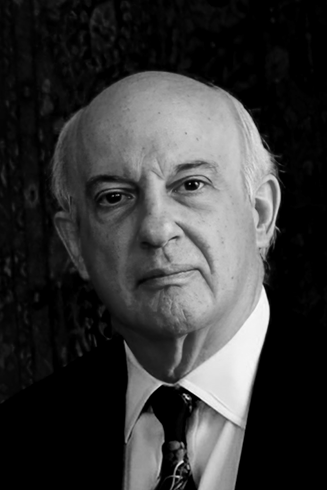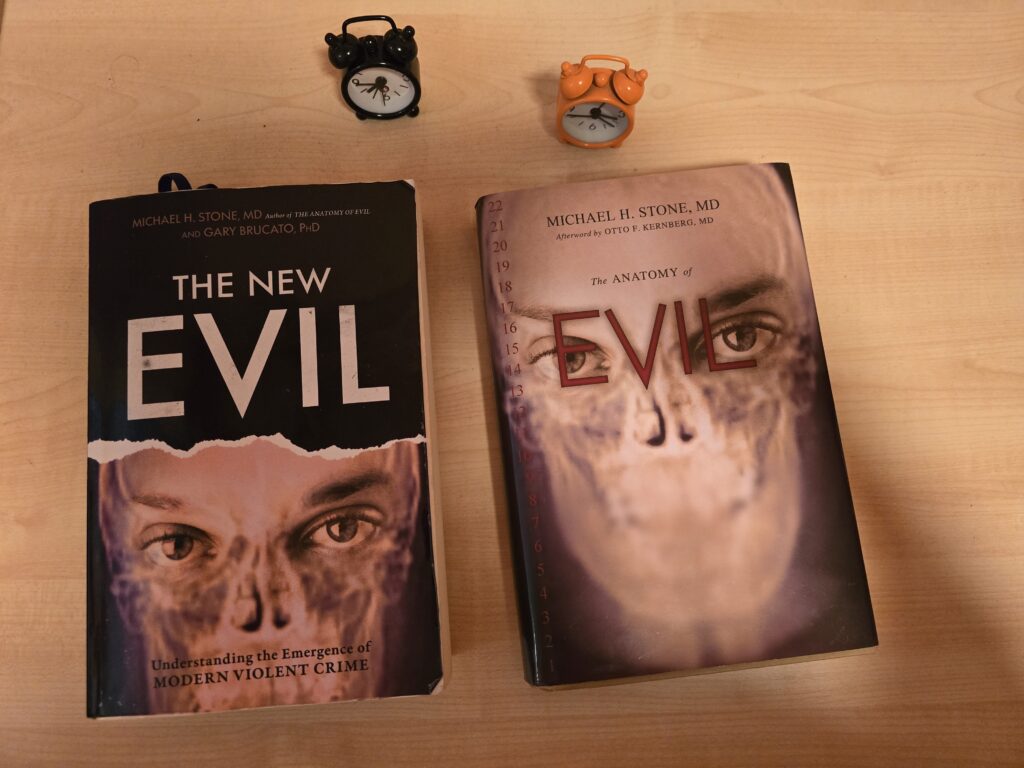
psychiatrist and Professor of Clinical Psychiatry at the Columbia University
College of Physicians and Surgeons in New York City. Dies at 90.

Dr. Michael H. Stone was a psychiatrist and scholar.
Dr. Stone’s work lent support to the need for flexibility in the therapeutic approach to treating borderline personality disorder. Stone was also recognized for refining the concept of psychopathy, as described by Dr. Robert D. Hare and Dr. David Cooke.
He is the author of many books, but his books The Anatomy of Evil and The New Evil (co-author Gary Brucato, PhD) cast new light on the mental health regarding evil acts. Dr. Michael H. Stone: ‘’…what is the character of the person… if the person has pretty good character chances are they’re not going to end up being a serial killer or committing torture, those people have a different makeup than the ones who killed with impunity, killed with pleasure; the psychopath.’’
Question: What is it like inside the mind of a serial killer?
Michael Stone: Well, men who commit Serial Sexual Homicide, which is what the public usually is referring to when they talk about serial killers as opposed to nurses and doctors that kill patients in hospitals, “Angels of Death,” etc. The serial killer, like Ted Bundy, John Wayne Gacy, and David Parker Ray, and those people, almost all of them, more than 90% meet criteria, hard criteria for psychopathy. Almost all of them are sadists. Meaning that they meet criteria for sadistic personality as it had been described in the official psychiatric manual, where there’s enjoyment of the suffering of others as a key quality, and a love of control and domination of others, etc. Half of them are loners, men that can’t make long relationships with others. So in effect, some of them use serial killing as a way of having a one-night stand where they rape the woman and then kill her to destroy evidence; dump their body along the road or whatever, like Ed Kemper out in California. And then go on to the next because they are incapable of sustained romantic, intimate relationship. Some of them, seeking revenge – revenge is a motive in some of them, like Debarr Labon in Texas who had been brutalized by his father and his mother… so they’re constantly getting back at the parents who abused them or neglected them. That would probably be true of Leonard Lake that had this torture place he built in a remote area of California. And another motive… killing a specific parent over and over, but not actually killing the parent. For example, when I interviewed Tommy Lynn Sells on death row in Texas, he had been neglected, abused, neglected again by his mother, never knew his father; terrible, terrible childhood. And he went around killing about 70 people, most of them women. And when I asked him, I said, “Tommy, you know, it sounds to me like maybe these women were like symbols or duplicates of your mother. Did you ever have a thought about, you know, killing your mom?” And he told me ”Anyone touch a hair of her head, I’ll kill them in a minute. You only got one mom.” So that was a very important point that I see over and over in these men. They have the same kind of loyalty and love of a parent even if the parent was abusive and horrible, that you can whip and hurt and yell and scream at a child, but if you’re the mom or you’re the dad, there still going to love you. They may hate you as well, but they’re going to love you. So, he never touched a hair of his mother’s head, instead he did symbolically get back at her through these other murders.
Question: Are serial killers born or created?
Michael Stone: Important question because there’s no one simple answer. There are a few serial killers, six or seven in my very large series, who were adopted at birth into normal homes, never abused, never neglected. But who, from adolescence on became violent and then in their 20’s embarked onto the career of serial sexual homicide that you can only ascribe to some genetic flaw along the lines of deficits in the amygdala or the prefrontal cortex that I had spoken about. Gerald Stano would be an example of such a person who killed 40 women and was finally executed in San Quentin. There are other men who were raised in fairly good homes, or even rather normal homes, but who suffered a head injury that affected these key areas in the frontal lobe, such as Richard Starett in Georgia. He was raised in a wealthy home. He went around killing 10 women after he had married and had a daughter, but then he got kind of fed up with the marriage, etc. Now he had suffered two bouts of prolonged unconsciousness when he fell from jungle gyms and things like that when he was a kid. After which he underwent a dramatic and swift change in his personality. The same thing, by the way, that happened to Phil Garrido, who was a normal kid in a normal home, but who fell off his older brother’s motorcycle when he was 14 and within days – he was unconscious, had to have a brain operation – within days, he began to develop rape fantasies. And then carried out a number of rapes and finally kidnapped that young Jaycee Dugard girl that he kept for 18 years and had two children by her. Now, the thing there is, there are other areas of the brain in the limbic system connected to the frontal lobes and so on and involving the temporal lobes on the side that have to do with our sexual responsiveness. What we respond to sexually. If those areas are damaged, we may end up with pedophilia, or abnormal desires for inappropriate objects. So that clearly happened to Phil Garrido and he became immediately fascinated and eager to commit rape when he was 14, 15 years old, after the head injury. So there’s… and about 30% of the serial killers had experienced some form of rather serious head injury. So that’s a factor that not too many people know about, but that’s important also. So the bulk of them; however, have come from horrible homes where the early damage and misery of their home becomes a motivating force later for seeking revenge, against those who had hurt them, plus which they have also been raised in such a way that they don’t have the social skills in order to kind of compensate for that and to make a good relationship anyway and kind of get past it. So they’re stuck, they’re mired in the misery of their childhood forever.

Inside the Mind of a Serial Killer New videos DAILY: https://bigth.ink/youtube Join Big Think Edge for exclusive videos: https://bigth.ink/Edge